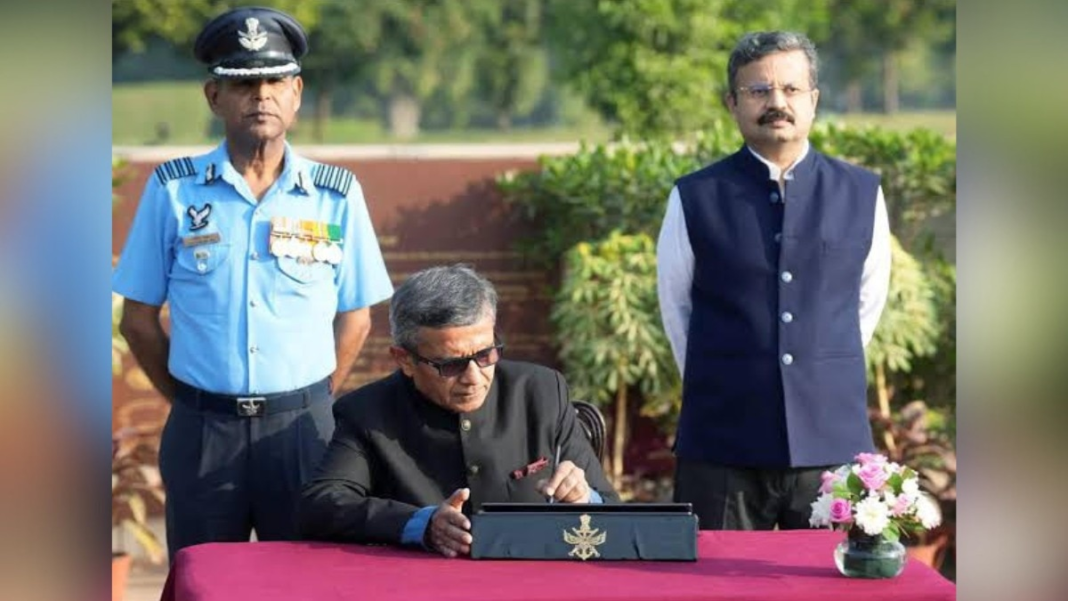The Defence Ministry Committee Addressing Indian Air Force Capability Development Amid Fighter Jet Shortage
The Defence Ministry has taken a significant step towards addressing the capability development of the Indian Air Force (IAF) by setting up a committee to tackle the critical shortage of fighter jets, weapons, and equipment. This move comes at a crucial time when the IAF is facing challenges in maintaining its fleet to counter emerging threats, particularly from neighboring countries like China and Pakistan.
The Story So Far
Amidst escalating tensions and regional security concerns, the IAF has been struggling with a shortage of fighter jets, with only 36 Rafale jets inducted so far. This number falls short of the 4.5-plus generation fleet needed to effectively respond to evolving threats in the region. The potential sale of fighter jets by China to Bangladesh further complicates the security landscape, emphasizing the urgency for bolstering India’s air defense capabilities.
Comprehensive Review
The committee, chaired by the Defence Secretary and comprising senior ministry officials, DRDO chairman Dr. Samir V Kamat, and IAF representatives, has been tasked with preparing recommendations to address the existing capability gaps. With insights from detailed IAF briefings, the panel aims to submit actionable recommendations within the next two to three months.
Key Focus Areas
One of the critical areas of focus for the committee is the IAF’s long-pending proposal to acquire 110 4.5-plus generation aircraft. The unresolved nature of this proposal has prompted discussions around exploring indigenous production to bridge the gap effectively. Additionally, the widening disparity in air-to-air and air-to-ground missile capabilities between India and China, coupled with China’s advantage in long-range surface-to-surface missile systems, underscores the pressing need for strategic advancements in India’s defense capabilities.
Challenges and Opportunities
While the IAF has been actively pursuing indigenous projects, delays in programs like the Light Combat Aircraft (LCA) Mark 1A due to supply chain issues with US-based General Electric (GE) have slowed progress. Plans for the production of 114 made-in-India fighter jets in collaboration with foreign manufacturers are considered pivotal in narrowing the capability gap and enhancing India’s defense preparedness.
Conclusion
In conclusion, the establishment of the committee to address the capability development of the Indian Air Force signifies a crucial step towards bolstering India’s defense capabilities amidst evolving regional threats. The recommendations put forth by the committee have the potential to shape the future trajectory of the IAF and enhance India’s readiness to counter emerging security challenges effectively.
Frequently Asked Questions
- What is the main focus of the committee set up by the Defence Ministry?
The committee aims to address the critical shortage of fighter jets, weapons, and equipment in the Indian Air Force. - Why is the acquisition of 4.5-plus generation aircraft crucial for the IAF?
These aircraft are essential to counter evolving threats from neighboring countries like China and Pakistan effectively. - How does the potential sale of fighter jets by China to Bangladesh impact regional security concerns?
The sale adds to the existing security challenges in the region, emphasizing the need for India to strengthen its air defense capabilities. - What challenges has the IAF faced in its pursuit of indigenous projects?
Delays in programs like the Light Combat Aircraft (LCA) Mark 1A due to supply chain issues have hindered progress in indigenous defense projects. - Why is the disparity in missile capabilities between India and China a cause for concern?
The widening gap in air-to-air and air-to-ground missile capabilities, along with China’s advantage in long-range surface-to-surface missile systems, poses a significant challenge for India’s defense preparedness. - How do plans for indigenous production of fighter jets aim to address capability gaps in the IAF?
By exploring indigenous production, the IAF seeks to bridge existing capability gaps and enhance its defense preparedness. - What role do foreign manufacturers play in India’s plans to acquire fighter jets?
Collaboration with foreign manufacturers for the production of made-in-India fighter jets is crucial in enhancing India’s defense capabilities and narrowing the capability gap. - What are the key timelines for the committee to submit its recommendations?
The committee is expected to submit its recommendations within the next two to three months, following comprehensive briefings from the IAF. - How does the Rafale jet induction impact the IAF’s current fleet strength?
The induction of only 36 Rafale jets falls short of the required 4.5-plus generation fleet needed to effectively counter threats in the region. - What are the broader implications of the committee’s recommendations for the IAF’s future trajectory?
The recommendations have the potential to shape the future readiness and capabilities of the IAF, positioning India to respond effectively to emerging security challenges in the region.Tags: Indian Air Force, Defence Ministry, Fighter Jets, Capability Development, Defence Preparedness, Regional Security, Defence Committee, Indigenous Production, Air Defense.

